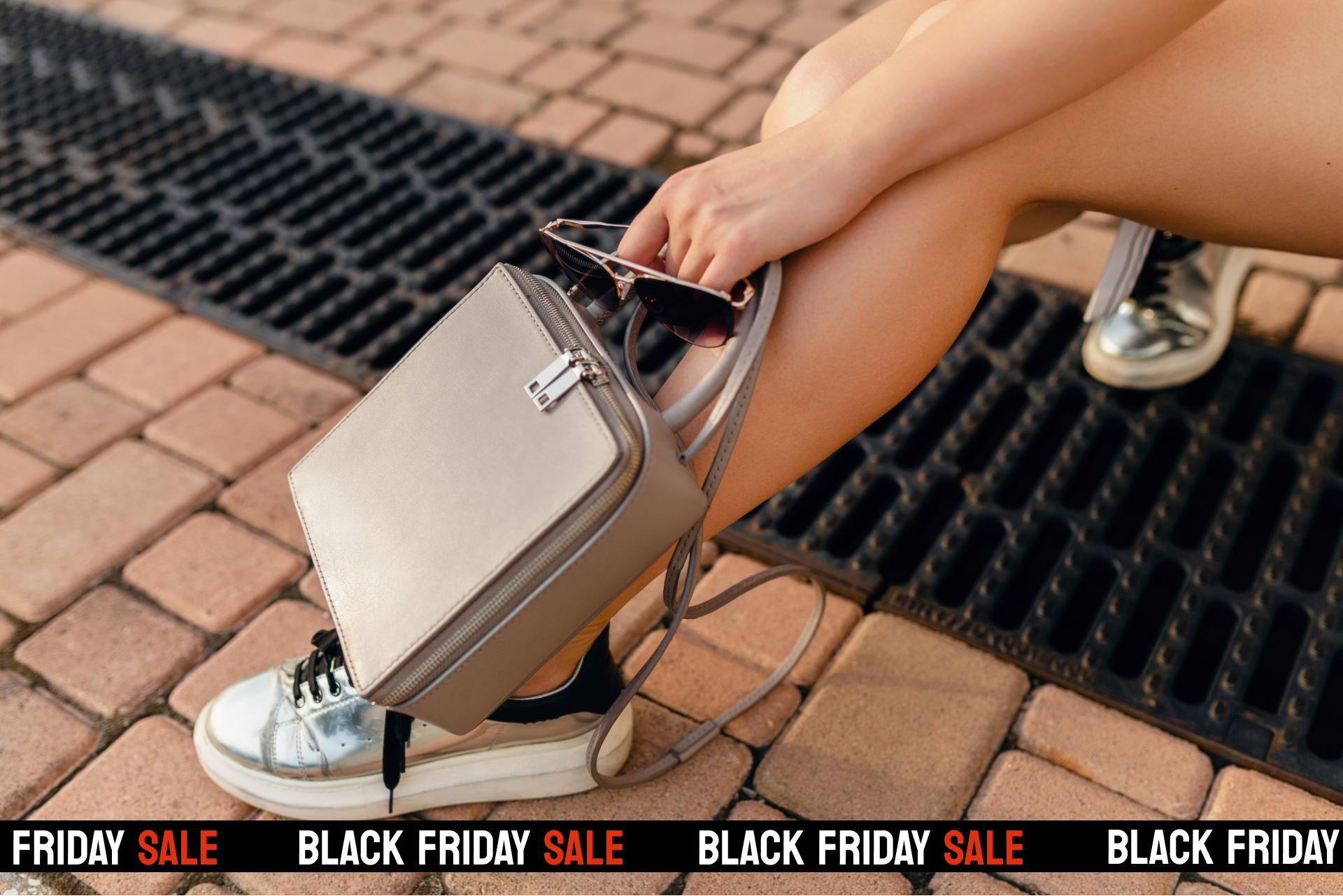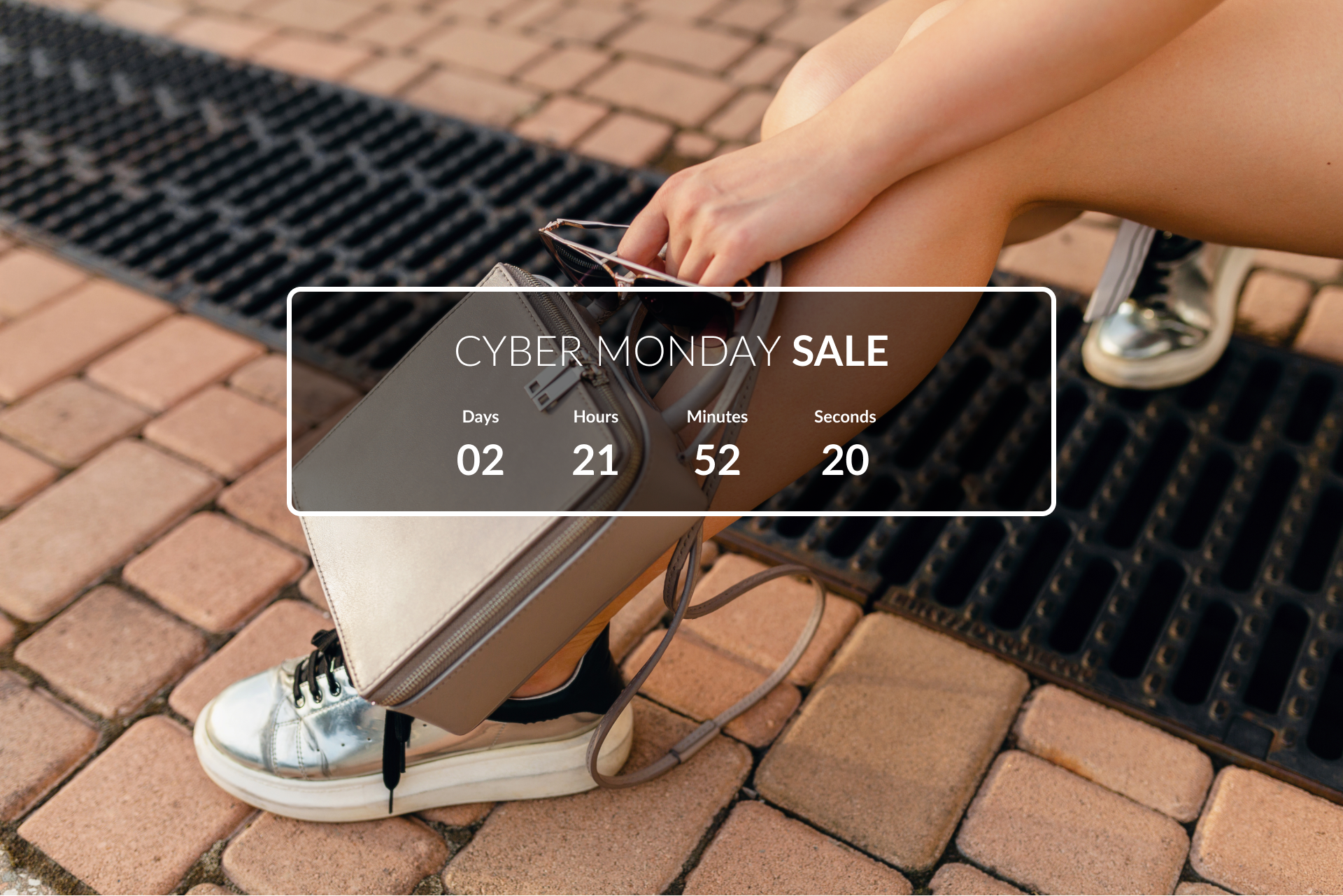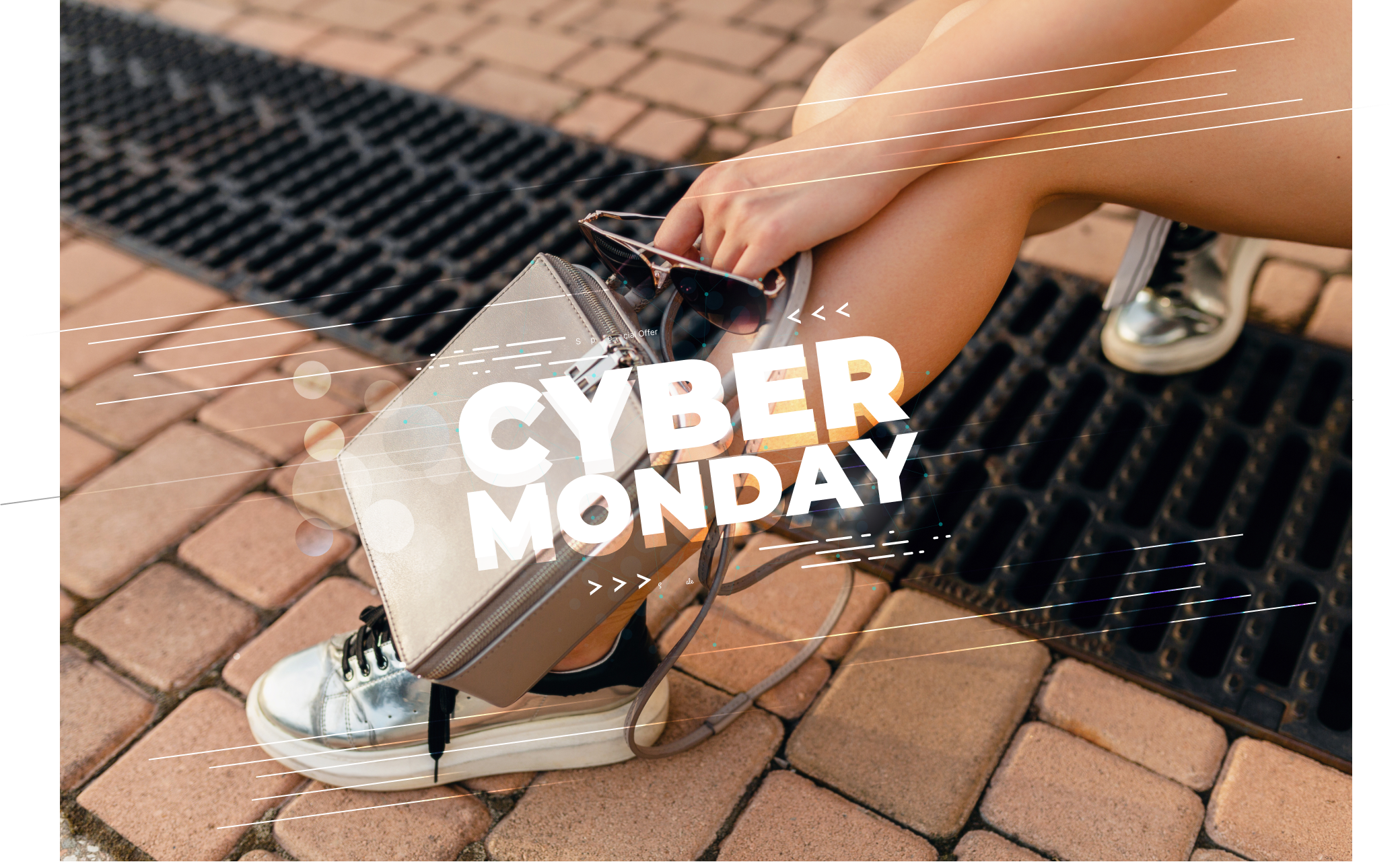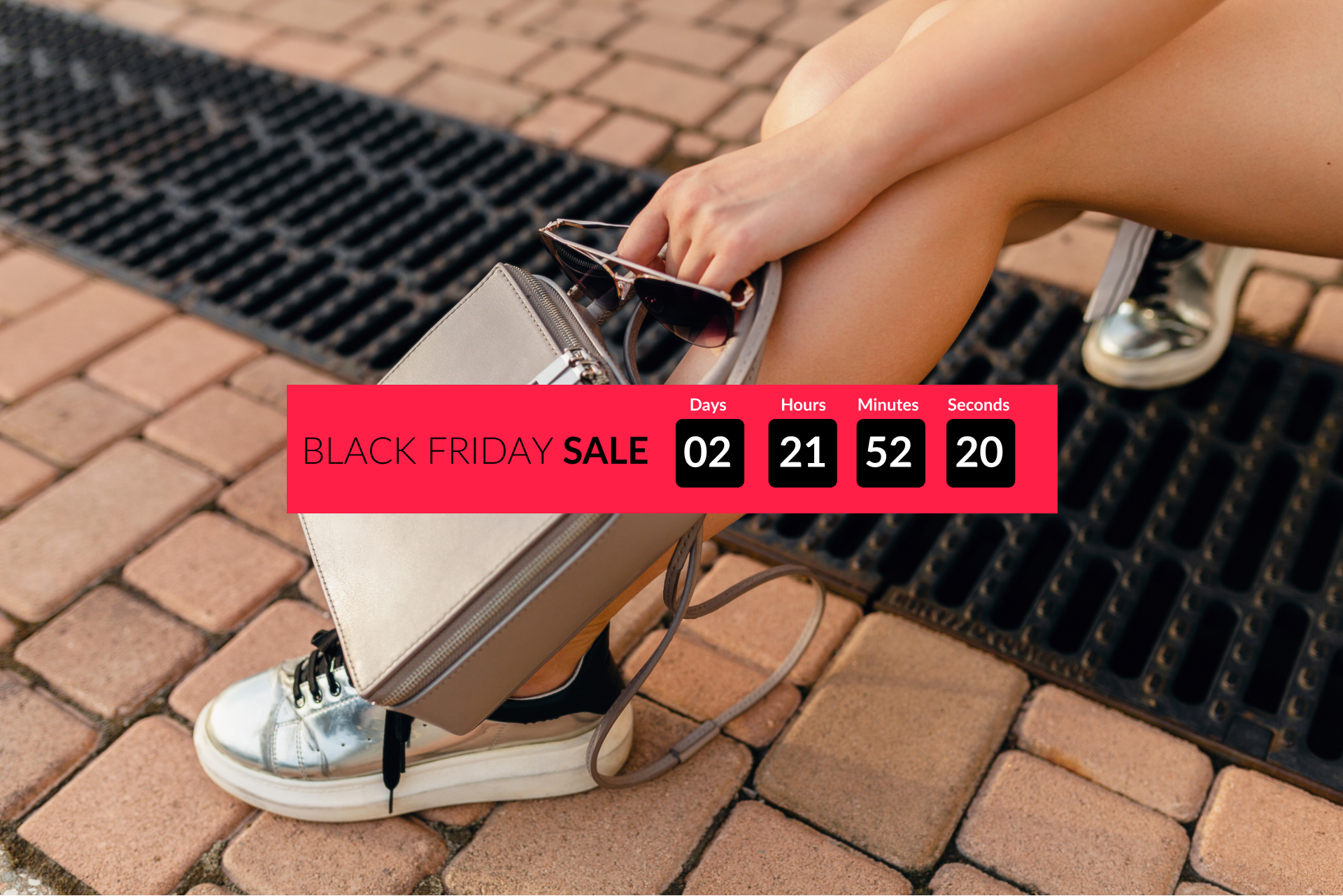12 Ways To Optimise Your Store for Black Friday and Beyond
The last Friday of November is a key selling period in any eCommerce calendar. An unparalleled opportunity for brands to generate sales and revenue as buyers rush to make pre-Christmas purchases.
To make sure you capitalise on Black Friday and Cyber Monday, your digital retail strategy IS crucial to leveraging the spike in online traffic. Careful preparation means you can benefit from new customer acquisition while generating revenue to end the year strongly.
In 2022 Shopify merchants smashed their way to £6.2 billion in sales globally, across the Black Friday Cyber/Monday weekend alone - an increase of 17.5% on 2021.
This is the ultimate guide in getting your eCommerce strategy Black Friday ready - we’ll take you through the easy wins and the pitfalls to avoid so you’ll be best placed to just watch those clicks and conversions come flying in over the Black Friday weekend.
1. Plan - and begin planning now!
It’s never too early to start planning for BFCM. It’s a very busy period in eCommerce so make sure you mitigate stress by getting the essential maintenance steps done in advance.
Create a solid strategy including Black Friday buzz campaigns, sneak previews, coordinated promotions across all channels, consider partnerships with influencers, and of course, a compelling offer.
Optimise your design by choosing the right layout for your Black Friday promotions, supplement this with clear signposting. Utilise banners, announcement bars, and special sale landing pages to promote the most compelling aspects of what you offer, making it easier for customers to find what they need.
Our best advice is to the time to step back and carefully consider what could be done to enhance your site, whether it be elements of design or CRO functionality to achieve the maximum return. Alternatively you could reach out to your friendly northern Shopify experts and we can guide you through it.
2. Start promoting early
It’s a busy time for the inbox in the run-up to Black Friday as customers will be inundated with BFCM promotions and discounts before the weekend itself.
Waiting until the week before Black Friday risks your carefully crafted communications being lost amongst all the noise. Some people may even become exhausted by the whole Black Friday frenzy, which has been amped up year on year over the last two decades.
Consider beginning your sale period early – and launching some of your promotions and discounts earlier in the month as this could generate more sales revenue in total. Alternatively, if you don’t want to begin your Black Friday discounting in advance, make the most of a longer lead-up by building buzz and anticipation.
Let your customers know about the upcoming sales with teaser adverts, emails or banners. This helps lodge your sale in their mind ahead of time – and ahead of other BFCM opportunities competing for their money.
A successful paid communication strategy may involve the following:
Buying impressions (and traffic) early, before their costs (e.g. CPM on PPC social ads) begin to rise dramatically, means more bang for your buck and less risk of wasted spend.
Using paid social early also helps build your social audience in time to be leveraged by further marketing.
Frequently tweaking, boosting or redeploying ads – including remarketing – through a ‘lead-up’ period helps you remain top of mind at this crucial time.
Focusing your paid strategy by narrowing your targeting in Google Ads, specifically to capture ‘high purchase intent’ keywords and phrases such as “bests deal on [your product]” will likely boost conversion rate.
3. Inform your customers
A simple, yet often-overlooked ‘easy win’ is keeping your own existing customers in the loop! Let your past and present buyers know that there will be a sale / deals on your site soon.
Maybe the deals you’ll be offering are unexpected, such as super deep limited-time discounts or perhaps it’s the first time your business is participating in BFCM - either way, you know these customers have already shown an interest in what you’re selling!
You already have these customers in your marketing list, target them with emails in the lead-up as segmented warm leads. Encourage them to sign up to receive advance info or early access so you’re already preparing your customers for purchase conversion when they visit your site.
Get in touch with us to see what quick wins we can suggest to help converting those warm leads into purchasing customers!
4. Build anticipation
Just as you can use your comms channels to drive awareness amongst your existing customer base, you can use them to build excitement and anticipation across wider audiences as Black Friday draws closer.
Social media can be leveraged to share behind the scenes content, to curate and exhibit social proof as an authority in your space. Utilise it to amplify your brand and it’s products / services through testimonials or creative content. This helps stimulate demand in general, but when combined with promoting your sale, or special offers on the products depicted, can be very effective at building BFCM-oriented intent to purchase.
Fully consider maximising the different features and strengths of each platform should with a multi-channel approach. Focus on promoting giveaways through Instagram, explore going live and featuring your products in TikTok shop to engage with a brand new audience. Be inventive and use a promotion-specific hashtag relevant to your brand and your BFCM campaigns. This builds hype around your Black Friday participation as an ‘event’ as well as creating general buzz around your brand and giving your online presence a boost.
As Black Friday approaches, combine your social channels with email marketing to produce immediate results, driven by the segmentation and CTAs.
5. Be strategic with segmentation
Email marketing, a vital channel through which to disseminate information at both a brand level and specific focused segmented level.
To effectively utilise campaign emails, start sending them out early in November to generate a general buzz before your BFCM sale. You can use "Coming Soon" hype and provide further previews of the types of offers to come. As the month progresses, shift towards more focused product-related emails to keep specific items on top of the customer's mind, based on your sales targets.
Generate social proof by sending an email out to your database, encouraging the sharing of UGC post Black Friday. Consider sending customers a review request or encourage them to tag your brand or products on their social platform, benefitting from the network effect by piggybacking on their social presence to spread further awareness.
Alice Thomas of Klaviyo recommends, “The more segmented and targeted your Black Friday emails, the higher revenue per recipient you’ll generate”.
Monitor the success of your email campaigns through tracking open rates and click through rates (CTRs) - the creation of quality, relevant emails well-crafted designed to appeal to various audience segments will ultimately strengthen your sender reputation and maximise your chances of conversion.
Thomas also suggests ten buyer email segments you can use to increase BFCM sales:
Seasonal shoppers
Recent openers
VIP customers
Product browsers
Product category buyers
Hasn’t purchased (but is engaged)
Email ignorers
Almost purchasers
Geographic targets
Gift givers
6. Importance of UX Design
If you want to improve conversion rate and AOV and maximise your total sales revenue, customers need to be able to “find what they’re looking for”. Put yourself in your ideal customer’s shoes and think in terms of “how can I make sure that they come across things that are likely to appeal to them?”.
This is especially important during Black Friday as there is even more competition for your customer’s attention and time. They need to find ‘the good stuff’ fast before they buy elsewhere. People are bargain-hunting, chances are that upsells, cross-sells and bundle offers will work better than ever as people are looking to find a deal and spend their money.
To do that, they need to be able to navigate around your store quickly and easily. Ideally, customers should grasp within seconds where they generally need to head. In addition to an intuitive layout, the user experience of your site whilst navigating needs to be slick and high quality. If your site is difficult, slow or annoying to navigate you’ll see that bounce rate go up.
Improving the functionality of core navigation tools such as on-site search will help your customers navigate quickly and find suitable, attractive things that they’ll want to buy.
First impressions count. This is the time to watch that bounce rate and get your navigation, layout and functionality on point, well before your sales begin.
With mobile traffic dominating, counting for 76% of Black Friday Cyber Monday traffic in 2022, consider a mobile-first approach. Incorporating an embedded social gallery can help mobile device users browse items on sale in a way that’s convenient, familiar and appealing to them.
Using an eCommerce agency to perform a full site audit, new theme design, or even new store build for you - here, at Squashed Pixel, we have a team of expert UX designers and developers who can help you from small UX tweaks to full-scale audits and builds.
7. Optimise store for mobile
Optimising your site's design and functionality for mobile devices is crucial as while some customers do opt to use their computer browser to complete checkout, using mobile to browse, mobile purchases constituted 69% of sales on Shopify Plus stores over last year’s BFCM weekend.
Consumers are increasingly looking to buy and shop online year on year, and are no exception: especially around BFCM, during which period ever more emphasis is placed by retailers on online-only deals.
While some customers do still ultimately opt to use their computer browser to complete checkout, using mobile to browse, mobile purchases constituted 69% of sales on Shopify stores over last year’s BFCM weekend.
Mobile users place slow page loading, followed by website crashes, as their top irritation online so it’s worth checking that your Shopify store is optimised for mobile users, in terms of site speed, navigation and functionality or your audience will click away and spend their money elsewhere.
8. Improve checkout experience - and remove ‘barriers’
Impulse purchases are a big factor across Black Friday shoppers. Reducing those barriers will increase the money you make from impulse purchases across the weekend.
The quickest route to conversion is to make your store a ‘one-click purchase’ environment. You can enable one-click purchasing by installing Shop Pay, an accelerated checkout system that allows customers to store their email/contact information, and debit/credit card details, and specify shipping and billing addresses.
In 2022, Shopify Plus stores that offered Shop Pay benefitted from a customer checkout speed almost 1.3 times greater than stores that did not.
Displaying a range of payment option buttons (think, Pay with Paypal or Apple Pay!) directly on product pages to give shoppers the option to either check out immediately or just click ‘add to cart’ and continue browsing (perhaps for some extra impulse purchases!). Whether they just want to buy the thing they came for and checkout as quickly as possible or continue browsing, you have removed the barrier to either.
Additionally, Shopify also allows you to incorporate dynamic checkout buttons to your site, to help smoothen – and increase - mobile transactions. After a shopper has selected a payment method, the site’s back end will remember that choice and automatically display the relevant button for that payment choice for the customer each time they visit the store in the future.
Together, implementing these options should reduce bounce rate and cart abandonment, encourage further browsing of your sale and extra impulse purchases, and increase the likelihood of return visitors (and repeat purchases).
9. Your Abandoned Cart Strategy
Whilst streamlining your checkout process and removing barriers between the product page and the completed purchase screen will usually show a significant reduction in abandoned carts, it will inevitably not reduce your abandonment rate to zero! This figure stands at an average of almost 70% globally across the year.
Email automation can be used to strategically programme sequential email prompts to customers who have abandoned their cart / have items in their basket but have not completed checkout successfully. Different prompts will be needed as some will have been abandoned on purpose, some may be delaying their purchase for whatever reason or still deciding whether to buy, and some may not realise that their purchase has not been completed (e.g. due to an error or a declined payment method).
They need to be timely enough that the shopper doesn’t buy elsewhere, but – in some cases – not too soon to be meaningless to people who had good reason to navigate away. Either way, annoyance or spamming is to be avoided.
It’s worth exploring alternative tools that may be more effective in prompting action amongst customer segments who may not check their email as often or open all of the brand emails that populate their inbox.
For example, ShopMessage can be used to push automated comms through social platforms. In addition to abandoned cart recovery, the application provides great assistance with other marketing objectives such as facilitating ‘personalised’ customer service messages or conversations, triggered by individuals’ onsite behaviour, helping you be more responsive in a customer-sensitive manner.
You can strategically customise this for BFCM, for example by sending certain customer / cart profiles a link back to their cart: with an automatically-applied – yet time-sensitive ‘special’ discount already there waiting for them. All they need to do is give in to this temptation and make one click to complete it!
For some cohorts where email has been less successful, this kind of tool is likely to help improve your click-through rates significantly.
You can also use ShopMessage to build your following and increase engagement more generally, e.g. by adding to your subscriber list in respective platforms. This will be useful beyond Black Friday as we head toward Christmas.
10. Let’s talk Promotions
Special discount codes and coupons offered during the Black Friday / Cyber Monday (BFCM) sale are quite popular among eCommerce brands. However, in reality, they may not always be effective in retaining customers and providing a smooth checkout experience. Despite attracting initial interest from customers, these coupons can impede the checkout process and lead to cart abandonment.
Customers may forget the code, input the wrong one, or get frustrated while looking for the details in their old email, causing them to leave the site without completing the purchase. This last-minute obstacle can be annoying and might discourage customers from returning to the site, even if they were initially excited about the purchase.
An alternative approach, endorsed by Shopify, is for brands to strategically offer custom seasonal promotions, such as additional sales reductions, and optimise closer to the point of purchase.
Customising the Black Friday offers available on your store can be made simpler by using Shopify Scripts and the Script Editor app to create automatic scripts that are triggered when the shopper adds an item – or particular items - to their cart. These can be used to automatically update the item/total price in the customer cart to reflect, for example, a ‘3 for the price of 2’ or ‘buy one get one free’ deal.
It’s easy to incorporate rule-based promotions this way, even for more complex offers such as tiered discounts (such as ‘spend £50, get an extra 10% off your order; spend £100 and get an extra 25% off’). This means there’s nothing for the customer to do, other than start filling their cart!
Using this strategy, rather than vouchers or multiple different codes for different deals, means that you can promote many deals simultaneously, which rather than impede the customer, only promotes more shopping.
This will help improve your conversion rate and increase the number of sales orders, appeal to a wider range of customer profiles by having the flexibility to offer different deal types or conditions (e.g. spend thresholds) easily, and A/B test different promotions in real-time, to boost the success of your sale. Average Order Value should increase, given the smart use of an appropriate mix of promotions.
11. Deep discounts
If you’re participating in Black Friday in terms of using it as a time to win new customers and increase sales via special promotions or discounts specific to the sales event, you’re going to need to offer something significant, substantial and attention-grabbing to be successful. This means, in one form or another, deep discounting.
For many kinds of products and businesses, there’s often a fine line between advertising an offer that, quantitatively, is eye-catching yet does not devalue your brand from a qualitative perspective. While crafting a compelling offer that is commercially impactful in the immediate term without compromising brand integrity is a challenge, BFCM is the one slot in your commercial calendar where you have the opportunity to offer compelling deals, featuring large percentage discounts or equivalent, that generate a high volume of concentrated sales without devaluing your brand.
Go BIG – and see sales surge!
When using deep discounts to generate high order volumes across the sale period, you’ll want to pay even greater attention to average order value (AOV) than usual. As above, one way to encourage customers to add more to their basket is to use tiered discounting: to unlock the maximum discount level, they must spend a minimum in absolute terms, i.e. “the more they buy, the more they save”.
Alternatively, to keep AOV high after discounting, choose products – or bundles of products – that have a higher price level to begin with to apply your highest percentage discounts too. For lower price items, you might wish to offer a higher percentage discount for customers IF they purchase a particular amount or combination of them. You can then promote that ‘Black Friday bundle’ as a special deal. By ensuring AOV is increased, you can afford to offer higher discounts – helping you attract new customers, and ensuring that shoppers are compelled to spend their money with you rather than a competitor.
To summarise, think in terms of these categories and consider using one version of each, rather than creating multiple iterations of each deal type, which customers might find it tedious to pick through and make sense of
BOGO deals
A common deal type to help you maximise AOV during the sale period. You might run a Buy-One-Get-One offer across your whole range during BFCM. similarly ‘Buy One, Get One Half-Price’ or ‘3 For The Price Of 2’. The benefit, compared to a basic percentage discount (where people might just buy one item but at a significantly reduced price), is that these deals tend to produce larger orders. Advertise the deal on product pages, ideally with suggestions of other complementary products the shopper may be interested in (e.g. in a gallery format with direct links to related product pages. Or, also create rules that automatically offer the customer an additional item, or range of products to select from, in the form of a popup or at the checkout stage.
Tiered promotions
Used to differentiate the (increasing) reward at each level of cart value (or structure, such as product bundles or combinations) and drive up AOV. The extra ‘reward’ doesn’t have to be in the form of an increased percentage discount. Instead, you could offer an automatic surprise gift – or a choice of gift - after a certain threshold is reached, or a higher value gift at each increasing tier. Either way, this induces many customers to add another item to the cart – especially if they are close to triggering the next level of reward. Use an app such as EasyGift to create rules for the gifts to be added and ensure these are automatically applied.
‘Earlybird’ promotions
For the reasons outlined earlier, the early bird often gets the worm! As well as getting ahead of the competition before shoppers have spent much of their budget, you’ll also open your brand up to getting on the radar of super-keen shoppers who just can’t wait until Black Friday weekend to get bargain-hunting. Amazon, for example, holds brief micro sales in mid-October. Conversely, deals activated after Black Friday may suffer from shoppers with less discretionary budget left to spend. Create rules in an app such as EasyGift to create rules activating different deals at different times in your schedule.
12. Upsell - and cross-sell!
‘Upselling’ means persuading shoppers to either buy a more expensive alternative product to the one they were originally planning to purchase or add additional related items to their cart alongside it. Either way, their total order value is increased.
This sales tactic involves understanding your customer’s needs and wants – and looking at your product range from their perspective. Determine the value they gain by purchasing from you. Suggested add-ons should be well-considered, genuinely relevant and value-adding to your customer.
You can also upsell deals. For example, bring it to the attention of the customer that they’d get better value for money if they opted for a larger pack size. Even though the price is higher, the customer is left happy with the deal they’ve received whilst you’ve generated higher AOV.
Similar to upselling, the tactic of ‘cross-selling’ involves offering shoppers items that complement their original purchase. Shopify’s blog highlights that stores that incorporate cross-selling receive an average upswing in revenue of 10-30%.
As with upselling, cross-selling efforts should come across as genuinely helpful, for example acting as a friendly reminder to shoppers who might otherwise check out or exit the store and leave something they’d genuinely benefit from behind or miss seeing some goods or deals relevant to their interests.
You can also add visual prompts and calls to action in relevant places across your Shopify store to emphasise the relevance and appeal of adding additional products that you’re attempting to upsell/cross-sell to the order and to make the user experience of taking advantage of these as smooth as possible. For example, incorporate design elements which incorporate phrases such as “You might also like”, “Others liked”, “Upgrade your package” etc. in places where the shopper can take appropriate action – such as placed above a gallery of selected relevant products, from which the shoppers can select an item to add to their basket with, ideally, one click..
As with upselling, cross-selling efforts should come across as genuinely helpful, for example acting as a friendly reminder to shoppers who might otherwise check out or exit the store and leave something they’d genuinely benefit from behind or miss seeing some goods or deals relevant to their interests.
You can also add visual prompts and calls to action in relevant places across your Shopify store to emphasise the relevance and appeal of adding additional products that you’re attempting to upsell/cross-sell to the order and to make the user experience of taking advantage of these as smooth as possible. For example, incorporate design elements which incorporate phrases such as “You might also like”, “Others liked”, “Upgrade your package” etc. in places where the shopper can take appropriate action – such as placed above a gallery of selected relevant products, from which the shoppers can select an item to add to their basket with, ideally, one click..










